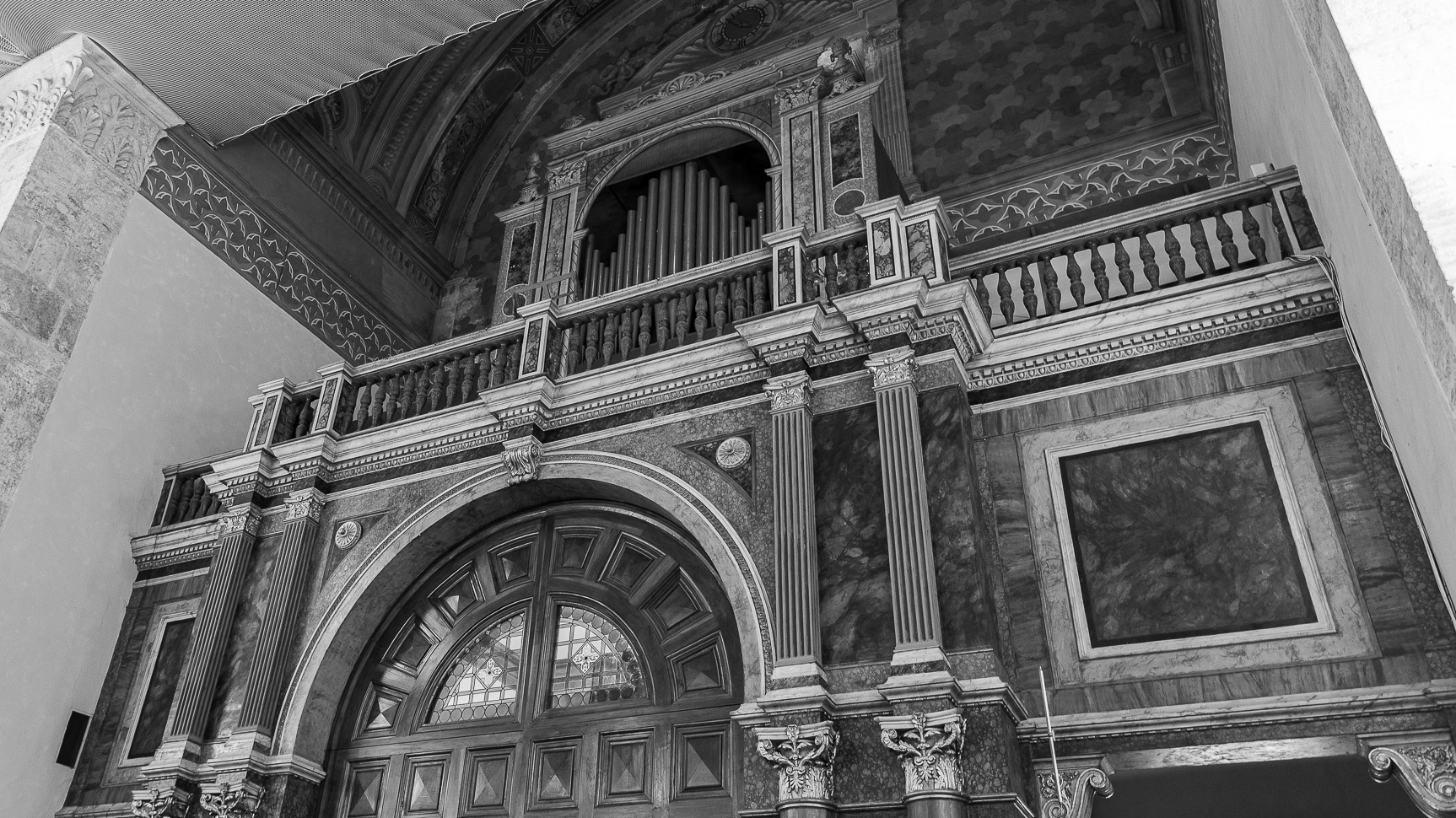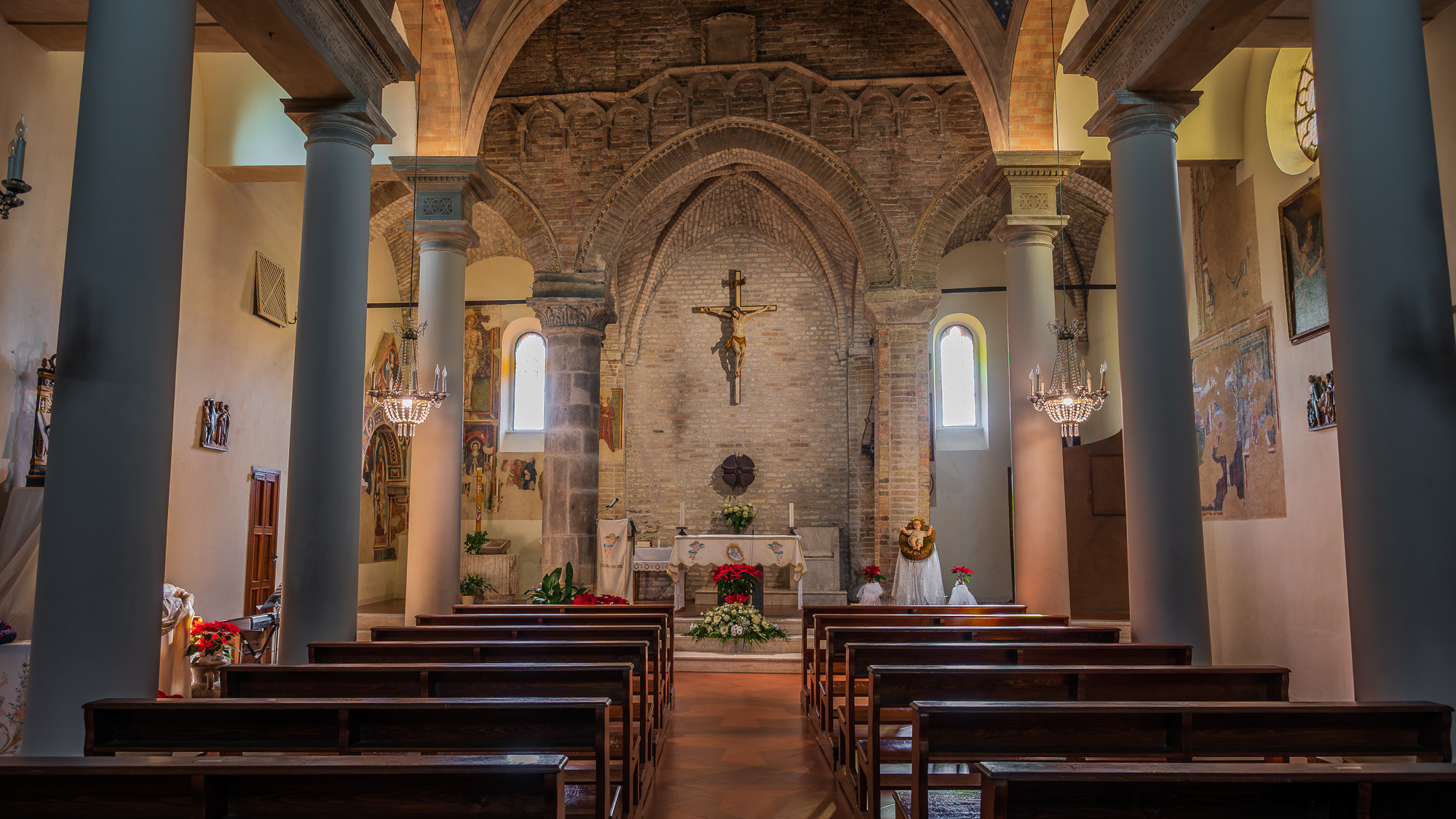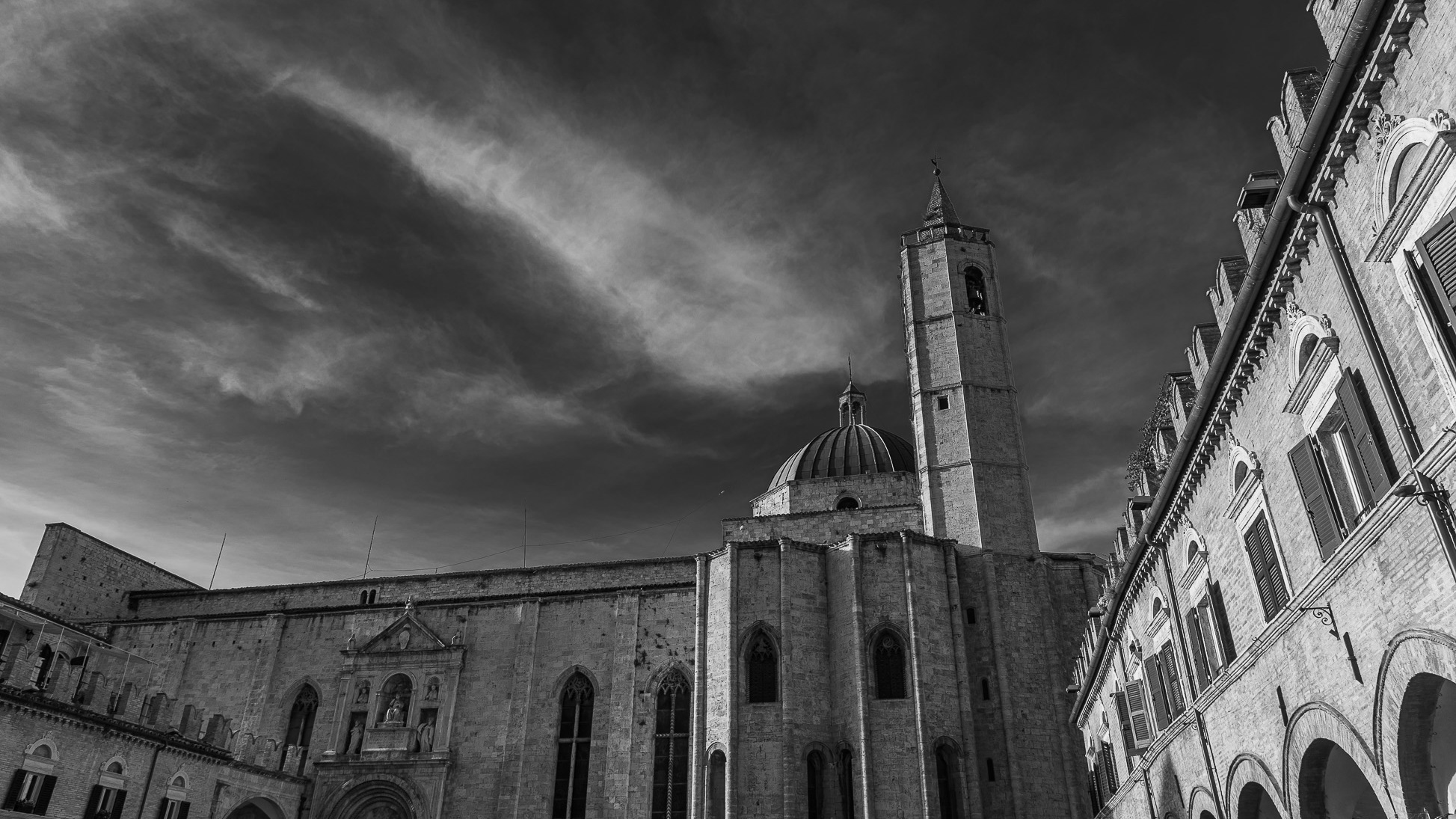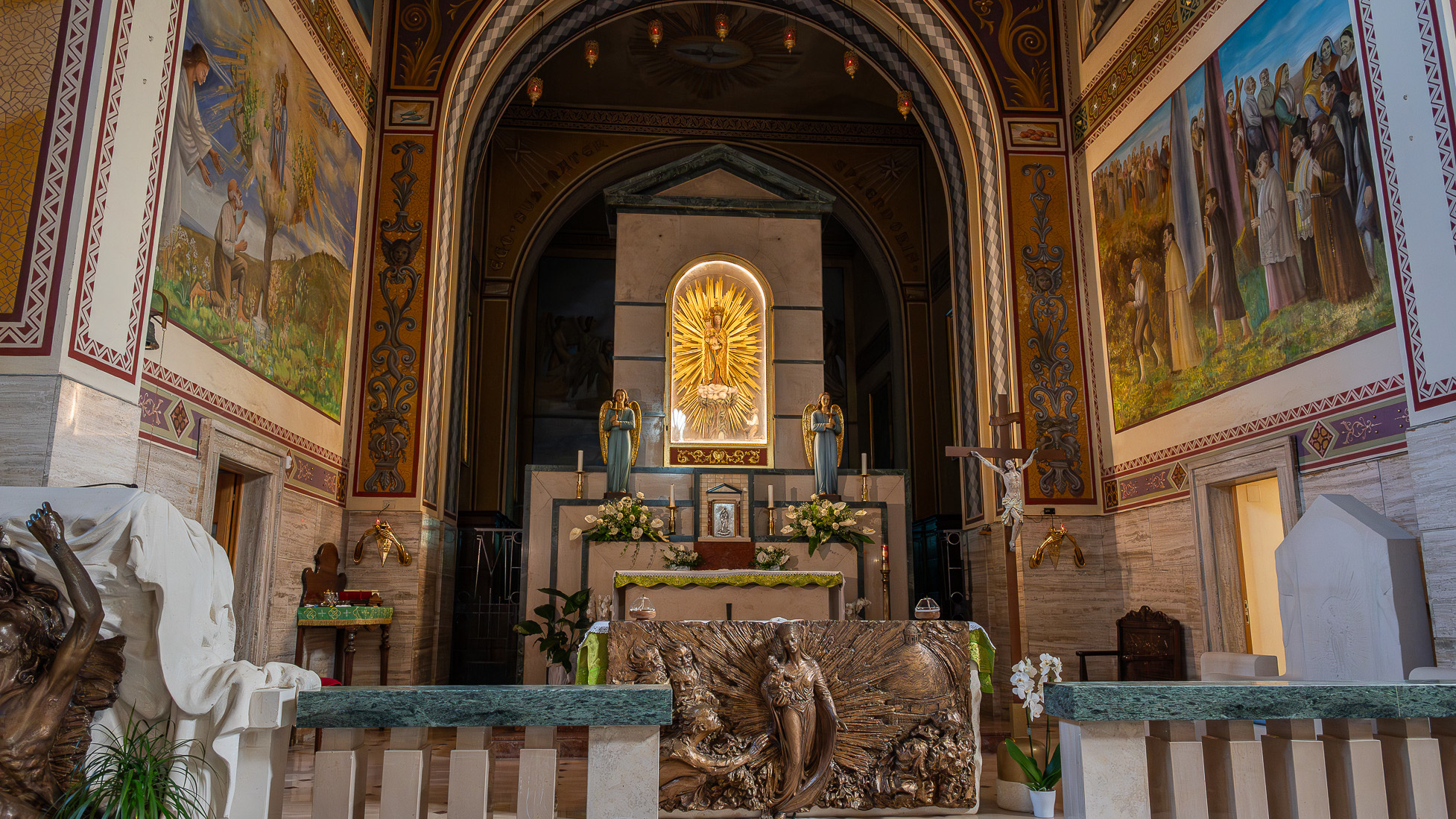Recanati. The Torre del Borgo
2022
36 meters high and crowned by Ghibelline battlements, the Torre del Borgo was built in the 12th century and is located in Piazza Giacomo Leopardi in Recanati
You may also like

2023
Ascoli Piceno, Marche. The Cathedral of San Emidio
The city's cathedral, dedicated to the patron saint, stands on the site of a Roman public building, perhaps the Basilica del Foro, and is the result of multiple construction events that substantially range from the 11th to the 16th century. The main facade created by Cola dell'Amatrice opens onto Piazza Arringo, while the two side facades date back to the end of the 15th century. The interior, with three naves divided by polygonal pillars, from the end of the fifteenth century, houses, among the various works, in the central apse a late Gothic wooden choir from the first half of the fifteenth century, a wooden pulpit from around 1660; in the Chapel of the Sacrament the Polyptych of Sant'Emidio by Carlo Crivelli, the imposing decorative cycle by Cesare Mariani, and the crypt of Sant'Emidio, built in the mid-11th century which houses, in a 4th century sarcophagus, the relics of the patron saint of the city.

2025
Offida. Piazza del Popolo, the Town Hall

2025
Grottammare. The Medieval Castle
Sources report news of the settlement on the hill starting from the 11th century, but the origin of the castle could be dated back to the 8th and 9th centuries.
2022
Recanati. Church of S. Anna
Built in 1400 and rebuilt in 1700. In it there is a faithful reproduction of the Holy House of Loreto as it was before the fire of 1921 and an ancient image of the Madonna.
2022
Offida, Ascoli Piceno. Piazza del Popolo, the Town Hall
Town Hall. Built between the 13th and 14th centuries (central crenellated tower). The façade is preceded by a 7-arched portico with an elegant 14-arched loggia raised in the 15th century. Inside there is a small art gallery with works by Pietro Alamanno and Simone de Magistris from Caldarola. In the municipal historical archive there is, among other things, the mutilated parchment cadastre of the fourteenth century with a good 70 parchments in Gothic characters.

2024
Torre di Palme. Church of Santa Maria a Mare
Probably built in the 12th century, original frescoes from the 15th century are still clearly visible inside, while the vault was frescoed in the early 1900s.

2025
Montemisio. Sanctuary of the M. Consolazione

2022
Ascoli Piceno. The Church of San Francesco
This church is considered one of the best Italian works of Franciscan architecture, as well as the most representative Franciscan religious building in the Marche region. It was begun with the adjoining convent in 1258, consecrated in 1371 and completed with the dome in the 16th century. On the main facade, in Via del Trivio, there are three Gothic portals, while the right side acts as a scenic backdrop to the Piazza del Popolo and is characterized by the dynamic fifteenth-century apses, the fourteenth-century side portal surmounted by the monument to Julius II of 1510 and ends with an apsidal group of rare architectural model.

2023
Giulianova. The sanctuary of the M. dello Splendore
The sanctuary of the Madonna dello Splendore is a cult building in Giulianova, with the convent, the miraculous fountain and the Art Museum of Splendor and the "Padre Candido Donatelli" Library
2025
Marche, spectacular view and sunset
